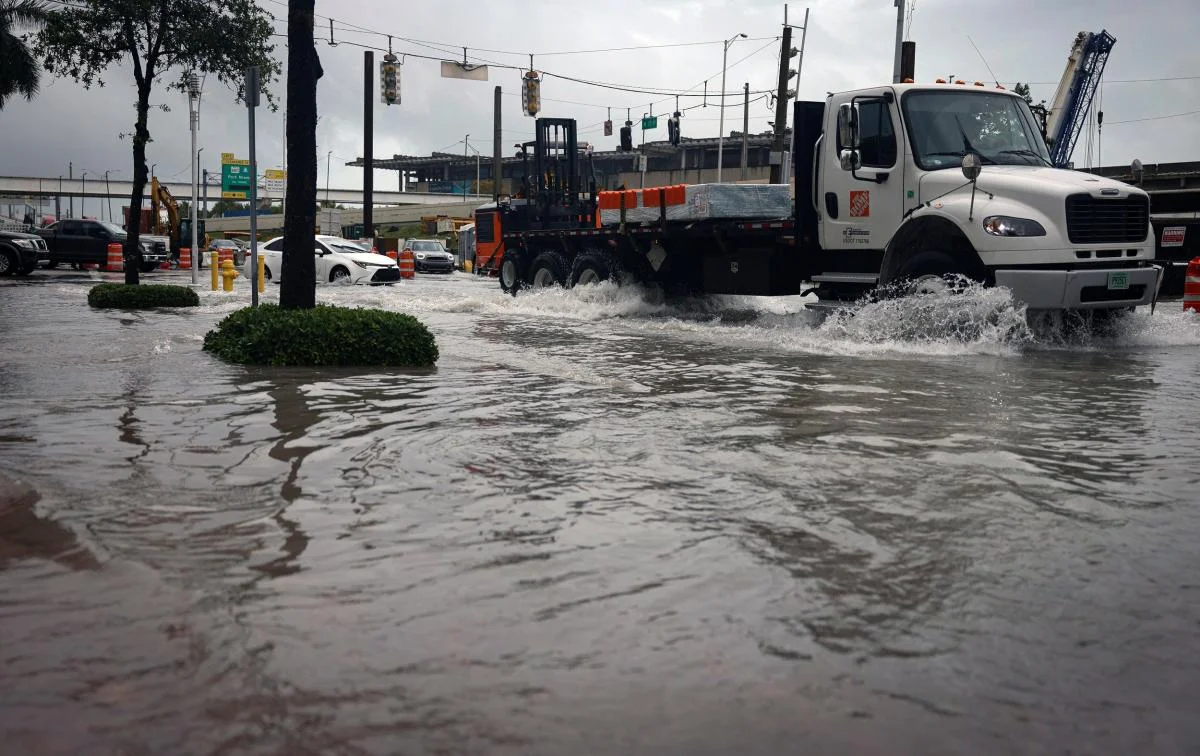Introduction
On a great day in Fort Lauderdale, Florida, the city experienced a record-breaking 2 feet of rainfall in just 24 hours. This extreme weather event raised questions about the climatological factors contributing to such an intense downpour. The meteorological elements behind this event, its impacts on the local environment and infrastructure, and how we can prepare for future extreme weather occurrences.
Climatological Factors Behind the Deluge
A combination of weather patterns and atmospheric conditions culminated in Fort Lauderdale’s exceptional rainfall. The key factors include:
- Tropical moisture influx: A surge of tropical moisture from the Caribbean Sea was drawn northward, creating a favourable environment for heavy rainfall.
- Atmospheric River: An atmospheric river, a narrow corridor of concentrated moisture in the atmosphere, contributed significantly to the torrential downpour.
- Slow-moving low-pressure system: A stalled low-pressure system over the region allowed for the continuous influx of moisture, enhancing the rainfall intensity.
- Topography: The flat terrain of South Florida contributed to the rapid accumulation of water, exacerbating flooding.
Understanding Atmospheric Rivers
Atmospheric rivers are long, narrow bands of moisture-rich air that transport significant amounts of water vapour through the atmosphere. They are crucial in the global water cycle, redistributing moisture from the tropics to higher latitudes. When these systems interact with land, they can produce heavy, persistent rainfall, often resulting in flooding and other weather-related disasters.
Impacts on the Local Environment and Infrastructure
The record-breaking rainfall in Fort Lauderdale had significant consequences for the local environment and infrastructure:
- Flooding: The rapid accumulation of water inundated streets, homes, and businesses, causing extensive property damage and displacing residents.
- Sewage overflow: The deluge overwhelmed sewage systems, contaminating local waterways and posing health risks.
- Ecosystem disruption: The sudden influx of freshwater altered the salinity levels of nearby estuaries, negatively impacting aquatic life.
- Transportation disruption: Road closures and public transportation suspensions created widespread travel difficulties and economic losses.
Comparing with Other Extreme Rainfall Events
Fort Lauderdale’s 2-feet rainfall event is not an isolated incident. Other notable extreme rainfall events around the world include:
- Houston, Texas (2017): Hurricane Harvey produced up to 60 inches of rain, leading to catastrophic flooding and billions of dollars in damages.
- Kerala, India (2018): In the worst flooding event in nearly a century, the Indian state of Kerala received over 30 inches of rain in just two weeks, resulting in widespread destruction and thousands of displaced residents.
- Cumbria, United Kingdom (2009): The small town of Cockermouth was inundated with over 12 inches of rain in 24 hours, causing severe flooding and significant damage to infrastructure.
- Boulder, Colorado (2013): A week-long storm brought more than 17 inches of rain, triggering flash floods and landslides across the region.
These events highlight the increasing frequency and intensity of extreme rainfall events worldwide, likely influenced by climate change.
Preparing for Future Extreme Weather
As extreme weather events become more common, communities must adapt and prepare for the potential consequences. Strategies for addressing future weather-related challenges include:
- Flood-resistant infrastructure: Constructing buildings and roads to withstand floodwaters can minimize damages and disruptions during heavy rainfall events.
- Green infrastructure: Implementing natural solutions, such as rain gardens and permeable pavements, can help manage stormwater runoff and mitigate flooding.
- Updated zoning regulations: Restricting development in flood-prone areas can reduce the risks associated with extreme rainfall events.
- Early warning systems: Investing in advanced weather forecasting technology can provide communities valuable lead time to prepare for impending storms.
- Community preparedness: Encouraging residents to develop personal preparedness plans, including having emergency supplies and knowing evacuation routes, can save lives and property during extreme weather events.
Conclusion
Fort Lauderdale’s record-breaking 2 feet of rain in a single day is a stark reminder of the power of extreme weather events. By examining the meteorological factors behind this deluge and comparing it with other similar events worldwide, we gain a deeper understanding of the challenges posed by climate change. Investing in infrastructure, technology, and community preparedness will be essential in protecting our communities from the increasing threat of extreme rainfall events in the future.
